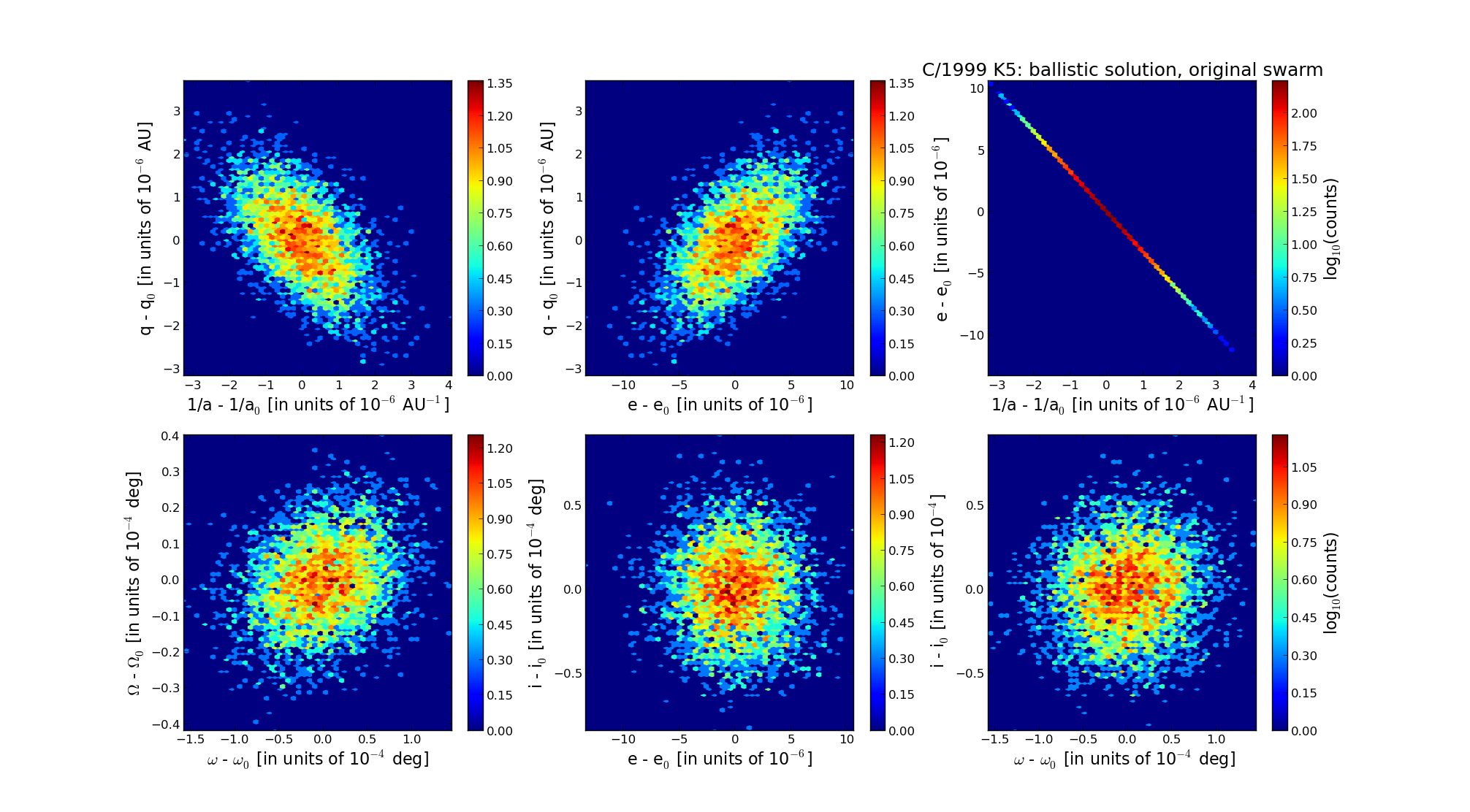| Solar System Dynamics & Planetology Group |
 |
C/1999 K5 LINEAR |  |
| Solar System Dynamics & Planetology Group |
 |
C/1999 K5 LINEAR |  |
| number of observations | 250 |
| number of residuals | 492 |
| data interval | 1999 May 15 — 2002 Mar. 18 |
| rms [arcsec] | 0.51 |
| orbit quality class | 1a+ |
| Epoch (TT) | 20000625.0 | = JD 2451720.5 |
| time of perihelion passage (TT) | 20000704.392540 | ± 0.000322 |
| perihelion distance | 3.25538203 | ± 0.00000088 |
| eccentricity | 1.00167918 | ± 0.00000306 |
| argument of perihelion [deg] | 241.487043 | ± 0.000043 |
| longitude of the ascending node [deg] | 106.381812 | ± 0.000011 |
| inclination [deg] | 89.473112 | ± 0.000024 |
| inverse semimajor axis [10-6 au-1] | -515.82 | ± 0.94 |

| Epoch (TT) | 16980208 | |
| time of perihelion passage (TT) | 20000703.418653 | ± 0.000333 |
| perihelion distance | 3.25370073 | ± 0.00000086 |
| eccentricity | 0.99993034 | ± 0.00000308 |
| argument of perihelion [deg] | 241.511845 | ± 0.000044 |
| longitude of the ascending node [deg] | 106.284045 | ± 0.000011 |
| inclination [deg] | 89.488511 | ± 0.000024 |
| inverse semimajor axis [10-6 au-1] | 21.41 | ± 0.95 |
| Epoch (TT) | 23070217 | |
| time of perihelion passage (TT) | 20000704.013847 | ± 0.000326 |
| perihelion distance | 3.26343066 | ± 0.00000093 |
| eccentricity | 0.99874785 | ± 0.00000310 |
| argument of perihelion [deg] | 241.555903 | ± 0.000043 |
| longitude of the ascending node [deg] | 106.352565 | ± 0.000011 |
| inclination [deg] | 89.570567 | ± 0.000024 |
| inverse semimajor axis [10-6 au-1] | 383.69 | ± 0.95 |